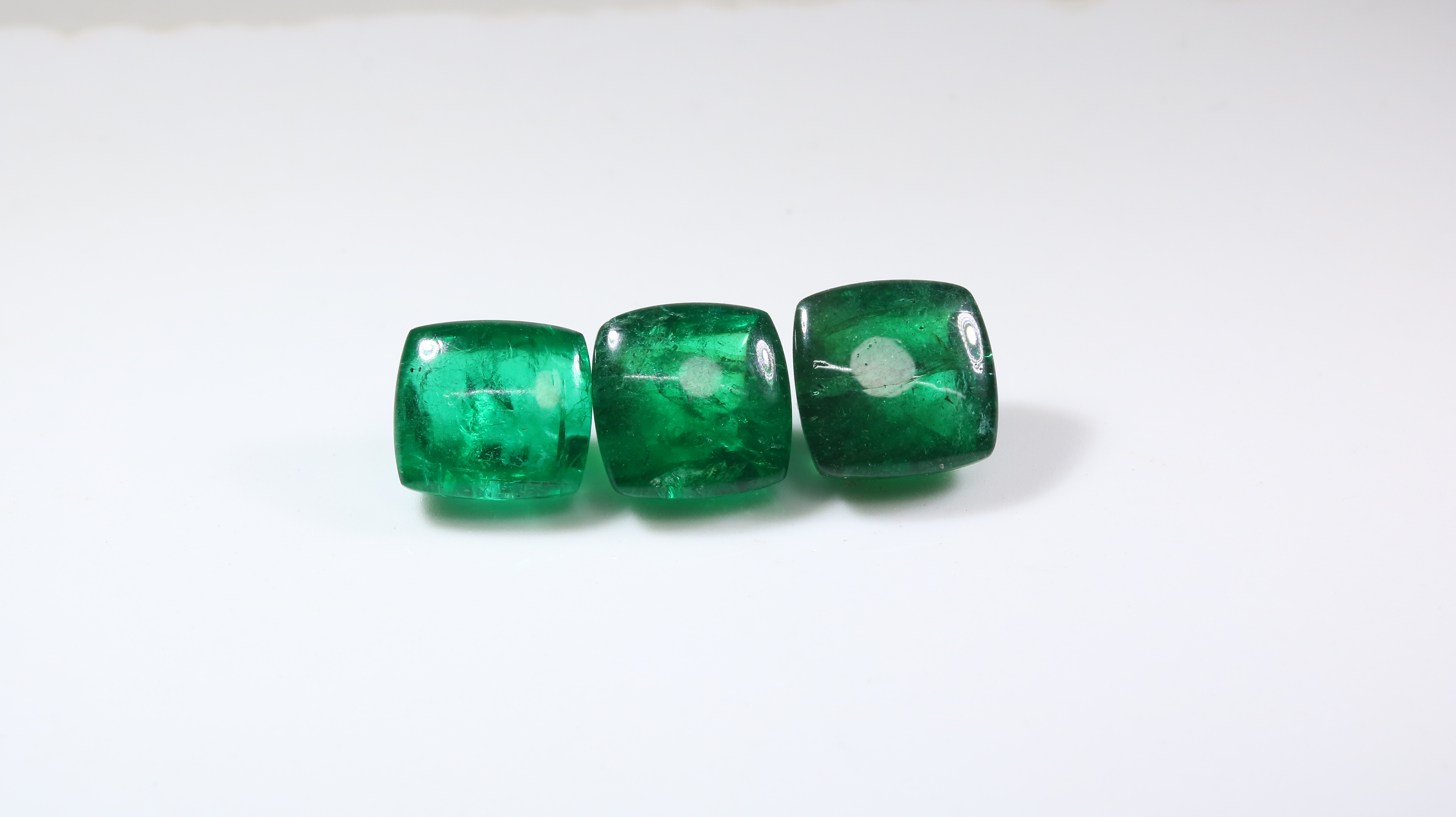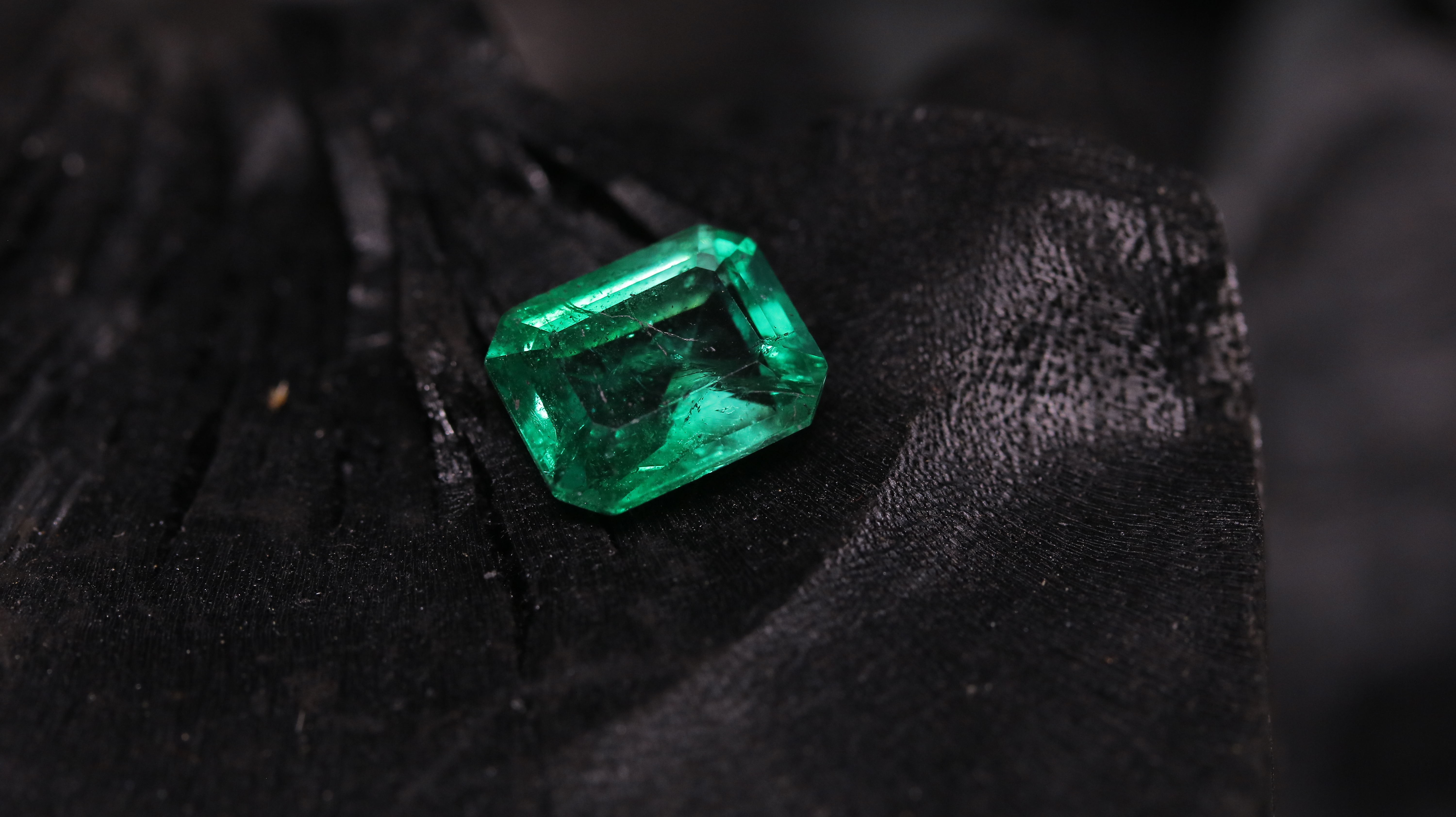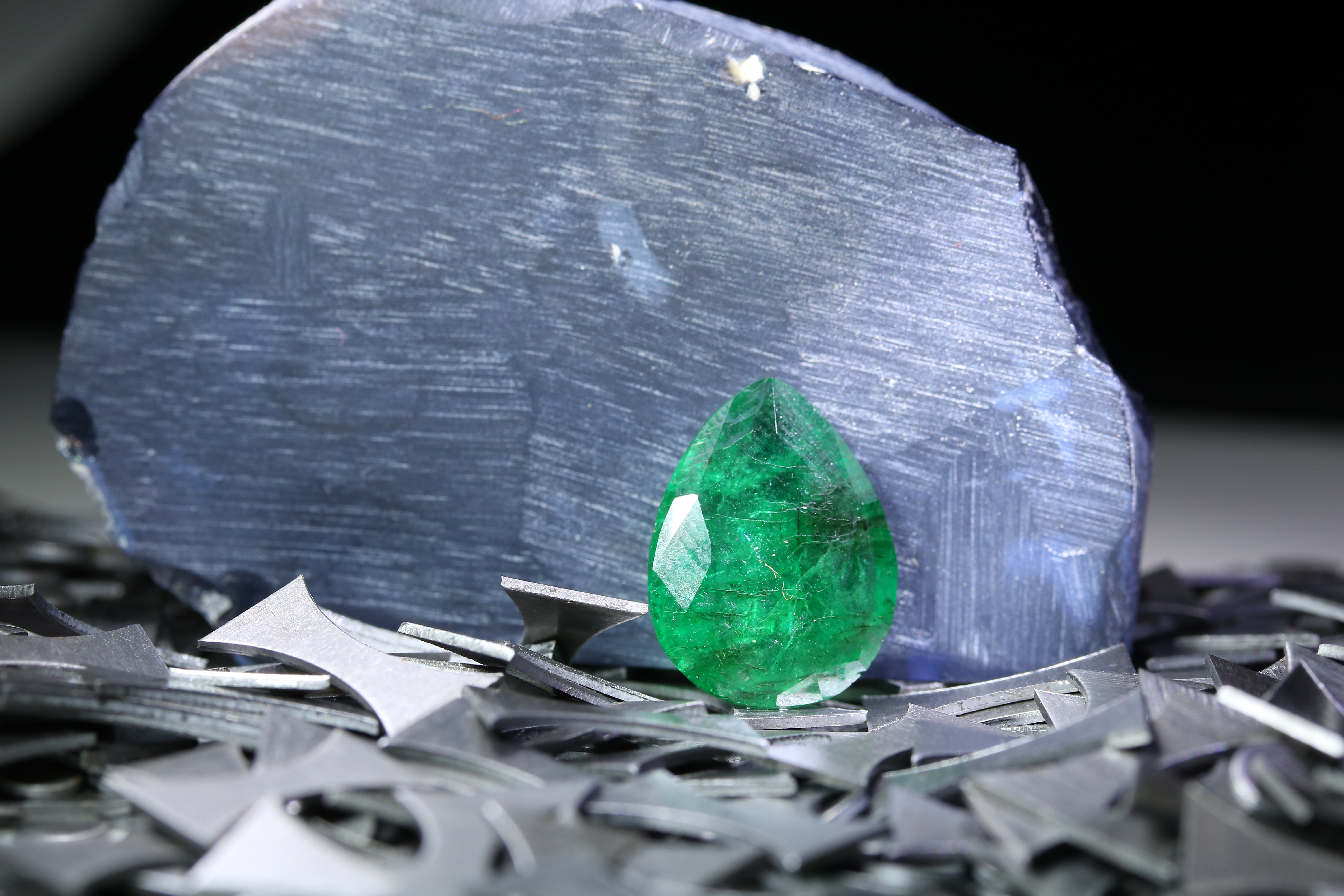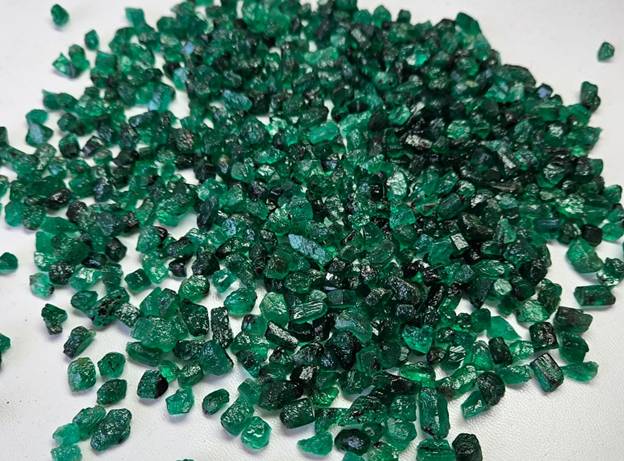FAQ
Emerald stone is a beautiful green gemstone that belongs to the beryl mineral family. Its name comes from the Latin word "Smaragdus," which means "green." Along with their stunning colour, emeralds are known for their Jardin inclusions, which are mossy or garden-like inclusions (the French word for garden).
Zambia has long been a known and influential producer of the finest emeralds in the world. In addition, Columbia, Zimbabwe, and Brazil are all excellent sources of high-quality emeralds.
Afghanistan, Pakistan, the United States, Australia, Russia, and other countries also contribute to the manufacturing of emeralds.
How rare are emerald stones?Emeralds are mined in various locations around the world, making them readily available despite their rarity. On the other hand, superior quality stones with vivid green colour and no apparent inclusions are rare and hence pricey.

This gem, also known as the Spring Gem, represents rebirth, joy, abundance, and various beneficial qualities. It is said to ward off the evil eye, cure ailments, and bring goodness, calmness, honesty, love, loyalty, and intelligence to those who wear it. Emeralds are also thought to symbolise good luck, hope, faith, equilibrium, and sympathy.
What is an emerald's colour?The unique attribute of an emerald stone is regarded to be its brilliant green colour with intense colour saturation. Its beautiful colour ranges from a bluish-green to a pure green to a deep green. Green beryl refers to any gem with a pale green hue and low saturation.

Colour and clarity are the two characteristics that assist define the value of emeralds. Therefore, emeralds with a uniform bluish-green to deep green tint and no apparent colour zoning are the most desirable. In addition, most emeralds are known to include eye-visible inclusions, which are widely accepted. On the other hand, if this addition reduces the gem's transparency or clarity, its value plummets.
Are emeralds treated in any way?The basic answer is that emeralds are frequently handled. Because natural emeralds are highly included, they must be treated to improve clarity. Oiling is the most common and widely utilised technique for emeralds. In addition, they are occasionally colour-enhanced to deepen their green tint.
How can you tell if an emerald is genuine?Green beryl, green-coloured glass, and even peridots are now offered as emeralds on the market. As a result, inspecting a gem before acquiring it is advised. If the gemstone is bluish-green to deep green in colour, it is a genuine emerald. If it's excessively bluish or yellowish, though, there's a good probability the stone you're holding is a fake. Furthermore, if this gem produces rainbow hues when examined under light, it is not a genuine emerald stone.
Can you wear emeralds every day?Emeralds have a mineral hardness of 7.5 to 8, which means they are durable and worn every day. However, because they are not as hard as diamonds or rubies, you must care when wearing them to avoid damage.
Is there any special care required for emerald jewelry?In the case of emeralds, like with other gemstones, a little TLC can go a long way toward preserving their luster and lengthening their shelf life. Clean your emerald jewelry using a mild soap solution regularly, dry with a soft cloth, and store in fabric-lined pouches. High heat, harsh cleansers, and other chemicals should all be avoided. Get your emerald adornments checked by professionals once a year to remedy any flaws (if any), like loose prongs, etc.
Emerald is the birthstone for which month?The birthstone for May is emerald.

The emerald, a vibrant green gemstone, has a rich and storied history that spans millennia. Here's an overview of the history of the emerald stone:
1. Ancient Origins: Emeralds have been cherished for thousands of years, with evidence of emerald mining dating back to at least 330 BC in Egypt. The ancient Egyptians associated emeralds with fertility, rebirth, and eternal youth, often burying them with their dead.
2. Greek and Roman Times: The ancient Greeks and Romans also revered emeralds, linking them to Venus, the goddess of love and beauty. They believed that wearing emeralds would enhance one's ability to foresee the future and reveal truths.
3. Spanish Conquest: During the Spanish conquest of the Americas in the 16th century, the Spanish explorers discovered vast quantities of emeralds in present-day Colombia. These emeralds became highly sought after by European royalty and nobility.
4. Mughal Empire: In the 16th and 17th centuries, emeralds gained immense popularity among the Mughal rulers of India, who adorned themselves with these precious stones. The Mughal emperors, such as Shah Jahan of Taj Mahal fame, were known for their extravagant emerald jewelry.
5. Colonial Period: With the colonization of South America by the Spanish, the Colombian emerald mines came under Spanish control. Emeralds became a significant part of the wealth extracted from the New World.
6. Modern Times: In modern times, Colombia remains one of the world's largest producers of high-quality emeralds, along with other countries such as Zambia, Brazil, and Afghanistan. Advances in gemstone mining and cutting techniques have made emeralds more accessible to a wider market.
7. Symbolism and Mythology: Throughout history, emeralds have been associated with various symbolic meanings and healing properties. They are often linked to themes of love, wisdom, and intuition. In folklore and mythology, emeralds have been credited with protective powers and the ability to ward off evil spirits.
8. Famous Emeralds: Several famous emeralds have gained legendary status over the years, such as the "Chalk Emerald," the "Duke of Devonshire Emerald," and the "Mogul Mughal Emerald." These remarkable gems have fascinating stories and have passed through the hands of royalty, nobility, and collectors.
9. Contemporary Use: Today, emeralds continue to be highly prized in the world of jewelry and fashion. They are often featured in high-end designer pieces and are a popular choice for engagement rings and other special occasions.

Overall, the history of the emerald stone is one of fascination, intrigue, and enduring beauty, making it a beloved gemstone throughout the ages.
Emeralds are fascinating gemstones surrounded by both facts and myths. Here are some interesting facts and myths about emeralds:
Facts:1. Composition: Emeralds are a variety of the mineral beryl, with their green coloration attributed to trace amounts of chromium and sometimes vanadium. They belong to the same family as aquamarine and morganite.
2. Color Variations: While emeralds are typically associated with a vivid green color, they can vary in hue from yellowish-green to bluish-green. The most desirable emeralds exhibit a pure, intense green hue with excellent transparency.

3. Mohr’s Hardness: Emeralds have a hardness of 7.5 to 8 on the Mohs scale, making them relatively durable but still susceptible to scratches and fractures due to their internal flaws, known as inclusions.
4. Origin: Some of the world's most renowned emeralds come from Colombia, where the Muzo and Chivor mines produce emeralds known for their exceptional color and clarity. Other significant sources include Zambia, Brazil, and Afghanistan.
5. Treatment: Many emeralds undergo treatment to enhance their clarity and color. This often involves the use of oils or resins to fill surface-reaching fractures, known as fissures, which can improve the stone's appearance.
6. Symbolism: Emeralds have long been associated with themes of love, rebirth, and vitality. They are often considered a symbol of hope and renewal, making them a popular choice for engagement rings and other romantic jewelry.
7. Cultural Significance: Throughout history, emeralds have held cultural significance in various civilizations, including the ancient Egyptians, Greeks, Romans, and Mughals. They were prized for their beauty and believed to possess mystical properties.
Myths:1. Healing Properties: Some ancient cultures believed that emeralds had healing powers, particularly related to eye ailments and vision problems. It was thought that wearing emeralds or using emerald elixirs could improve eyesight.
2. Protection from Evil: In folklore and mythology, emeralds were often associated with protective qualities. It was believed that wearing emeralds could ward off evil spirits, promote good fortune, and bring harmony to relationships.
3. Truth-Revealing Gem: According to legend, emeralds had the ability to reveal truths and foresee the future. This mythological attribute was associated with the Greek goddess Venus, who was believed to bestow emeralds with prophetic powers.3. Truth-Revealing Gem: According to legend, emeralds had the ability to reveal truths and foresee the future. This mythological attribute was associated with the Greek goddess Venus, who was believed to bestow emeralds with prophetic powers.
4. Fertility and Rebirth: In ancient cultures such as the Egyptians and Romans, emeralds were linked to fertility and rebirth. They were often buried with the dead to symbolize eternal youth and the cycle of life.
5. Connection to Nature: Emeralds were sometimes viewed as symbols of the natural world and its cycles. Their green color was associated with springtime, growth, and renewal, reflecting the vitality and abundance of nature.
While some of these myths may have originated from superstition and folklore, they contribute to the enduring allure and mystique surrounding the captivating emerald gemstone.
